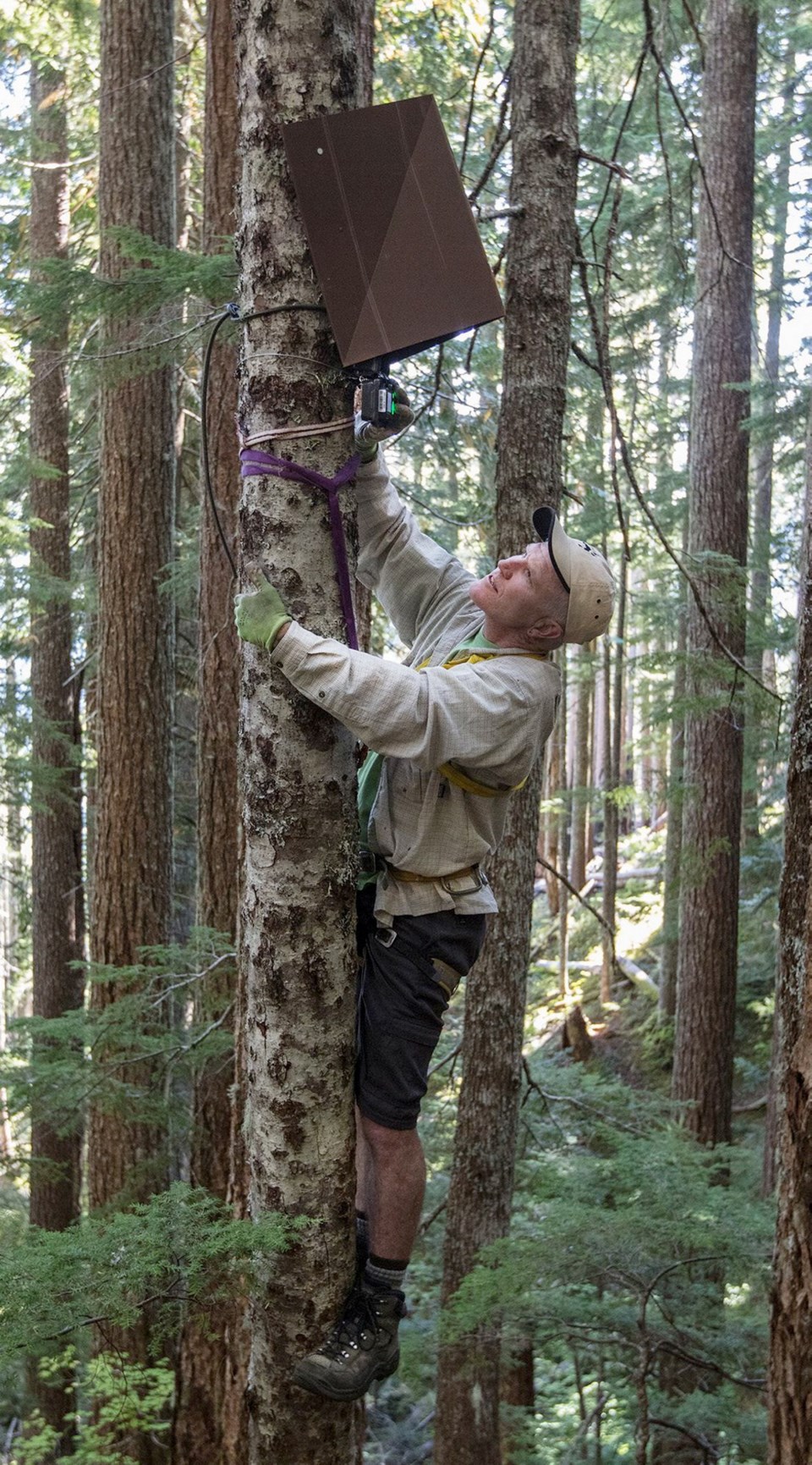MOUNT SKOKOMISH WILDERNESS, Olympic National Forest — Once common here, martens — sleek, bright-eyed mammals less than half the weight of a small house cat — appear to have virtually disappeared from their mountain redoubts.
Or have they? Scientists are trying to find out what is going on with the elusive native of these mountain forests, and why.
In the past 16 years, in remote camera surveys in which hundreds of thousands of images of animals were snapped by wildlife cameras all over the Olympics, only two stations caught a photo of a marten.
In all, only six documented sightings of the animal have been recorded since 1988.
Betsy Howell, a wildlife biologist with the U.S. Forest Service, is working with a host of partners to look for answers.
Their quest: checking two new wildlife cameras perched high above Lake Cushman, in the old-growth forests that reign supreme in this mountain wilderness. For it seemed if Pacific martens were anywhere, they ought to be here, in this deep, roadless forest. And the question of just what is going on with martens is a pressing one.
Martens are part of the balance of native animal life in the Olympics. Supremely adapted to deep snow, they are avid hunters of snowshoe hare in the winter, rocketing across deep drifts after their quarry. They also are masters of searching out mice, voles and other tasty meals in their holes under the snow.
Yet something appears to be amiss in their world.
Martens are abundant in the Cascades, just as they should be. Yet in the Olympics, researchers deployed nearly 200 wildlife cameras in 2016 in the coastal strip and high elevations of the Olympic National Park and National Forest, using remote cameras. They snapped nearly 400,000 images of animals of every sort.
But just one marten.
One of the possible problems challenging the Pacific marten in the Olympics is climate change, with snowpack cratering to zero in the Olympics in 2015. Martens need deep snow for their winter hunting success, and count on their fleet feet in snow to evade predators.
Another possibility is that logging outside the wilderness and park has stripped too much of the complex habitat martens require, or that they have yet to rebound from over-trapping.
Living as they do in the Olympics, the island effect of their habitat can strand small populations with fewer new recruits to diversify and build up populations.
For now, the marten mystery is attracting more attention.
“I feel there is importance to bearing witness to loss; we know something is happening,” Howell said. “Why is it happening? There are more layers these questions allow us to get to.”



